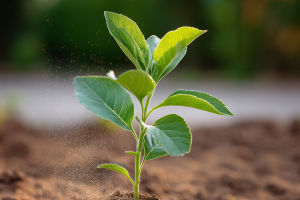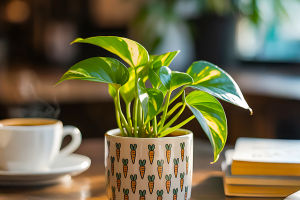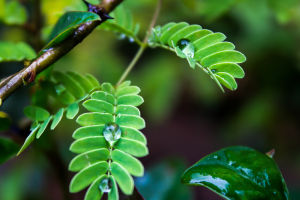Hey Lykkers! If you're dreaming of a garden that feels more settled and lasting, perennials are your best friends.
These are plants that don't just show up for a single season—they keep coming back, year after year, often with more strength and beauty than before.
Whether it's the cheerful return of daisies in spring or the stately elegance of hostas in summer, perennials offer lasting charm with less replanting.
In this guide, we'll explore what makes perennials different, why they're such garden staples, and how you can use them to build a vibrant, evolving green space. Think of them as reliable guests who return to your garden party every season with a fresh outfit.
Part 1: What Makes a Plant Perennial?
Let's start by digging into the basics of what defines a perennial and why they're worth your attention.
The Multi-Year Lifecycle
Perennials are plants that live for more than two years. Unlike annuals, which finish their entire life cycle in one season, perennials grow, bloom, go dormant, and come back again. You plant them once, and they keep rewarding you. Some, like peonies or daylilies, may bloom for only a short period, but others—like lavender or coneflowers—can offer beauty all season long.
So if you're looking to cut down on yearly planting chores, having perennials in your mix is a wise move. Once established, they often need less water, less fuss, and are generally pretty hardy, making them great for both beginners and experienced gardeners.
Types You'll See Again and Again
There's a wide range of perennial plants out there—some with flowers, some with foliage, and many with both. Think of black-eyed Susans, ferns, asters, echinacea, or even herbs like oregano and thyme. You'll find perennials suited for shade, full sun, dry spots, or damp patches.
One thing you'll notice is that many perennials don't necessarily look stunning their first year. But don't worry—by their second or third season, they hit their stride and become real stars in your garden layout.
Part 2: Growing and Enjoying Perennials
Now that you know what they are, let's talk about how to make the most of perennials in your space.
Getting Started with Perennials
When you're planning where to place your perennials, try thinking long-term. These plants will be sticking around, so choose spots where they'll have enough space to grow over time. Read the plant label or ask at your local nursery if you're unsure about spacing and light needs.
You might start with a few core plants and build out each year. Dig a nice, roomy hole for each one, water them in well, and keep the soil moist (but not soggy) as they establish themselves. Some perennials may bloom their first year, but others may take a season to build up their roots and really shine the next time around.
Design Tips for a Lively Garden
Perennials are great for structure and rhythm. You can use them to form the backbone of your garden, adding seasonal color around them with shorter-lived blooms. Try grouping them in odd numbers—like three or five—to create more natural-looking clusters.
Also, think about layering. Place taller plants toward the back, mid-height ones in the center, and lower growers near the front. This helps everything stay visible and full of life. Over time, you'll notice your garden developing a personality of its own, shaped by these plants that quietly return and thrive.
Lykkers, perennials are like steady companions in your garden adventure—offering beauty, form, and color without the yearly effort of replanting. From delicate spring arrivals to sturdy summer bloomers, these plants give back more the longer you grow them.
So whether you're designing a peaceful patio patch or building a blooming backyard retreat, include a few perennials in your plan. With just a little love and patience, they'll keep showing up, year after year, ready to grow alongside you.


